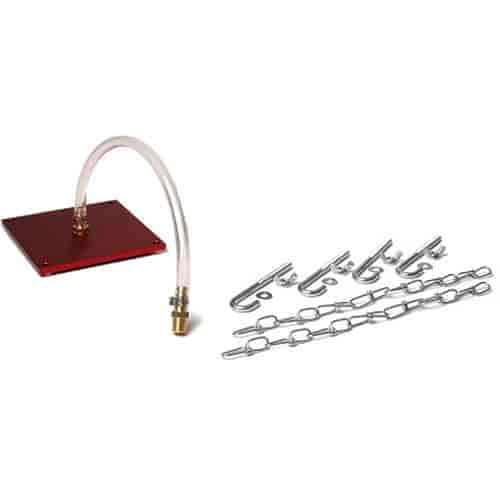Yep, that would work if you could seal it to the reservoir as you mention- the seal for the reservoir that is provided cannot be used as it is also the bellows to allow the fluid level to do down and would seal the system from the pressurized bleeder.
I have used positive pressure to bleed these systems successfully but I did it with a tapered tube held in place at the bottom of the reservoir neck. It worked well enough but is somewhat risky because if the plug should pop out while under pressure, it will spread brake fluid everywhere. Not a pretty sight.
Again, I have had significant difficulties getting any fluid to pump through a dry system on all three circuits on a C-14. Most of the time, no fluid flows into the master cylinders after the system is bled dry and so the process of bleeding will not even start, let alone finish. And if the system does bleed, it seems to trap small amounts of air and remain 'squishy' for days or weeks. Quite a few people have reported the same problems on this bike; I suspect the hole between the reservoir and the master cylinders are too small to allow a decent fluid flow. At any rate, the powered vacuum system has worked fantastic for me on my bike and everyone else's bike I have used it on. You are absolutely right in that it does require a compressor though so if one is not available, that system will just not work.
Brian
Brian,
A universal adapter such as this could be used on the c14 or any other reservoir that's a non standard shape. So long as the top can be sealed to the reservoir, you're in good shape.
 .
.
Consider yourself very lucky to have accessible compressed air in your garage. We don't have that here, so the hand pressurizer hand to do. Pumped it up to about 15 psi, then started at the rear of the car. It didn't squirt out, but did come out in a small stream. The fronts did bleed faster because the lines have a large ID. Went through nearly 2 32oz bottles to flush the car out. I imagine one or two 12 oz bottles should be enough for the bike.
Edit: Just caught your comment about the rear brake. You are correct. However, the rear is so easy to do on a bike, I wouldn't bother with a pressure bleeder or vacuum pump.